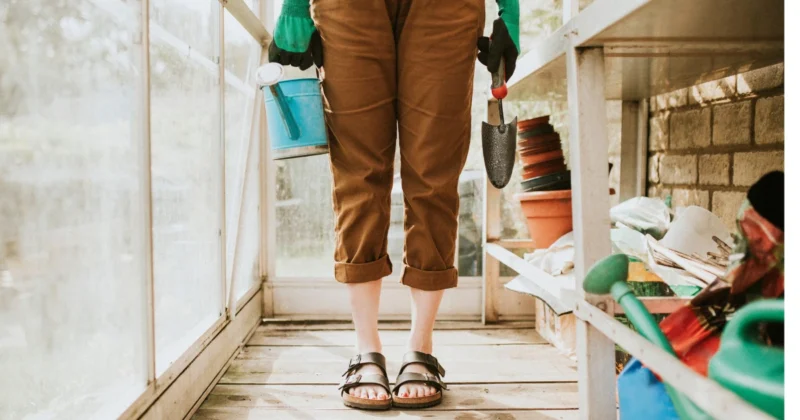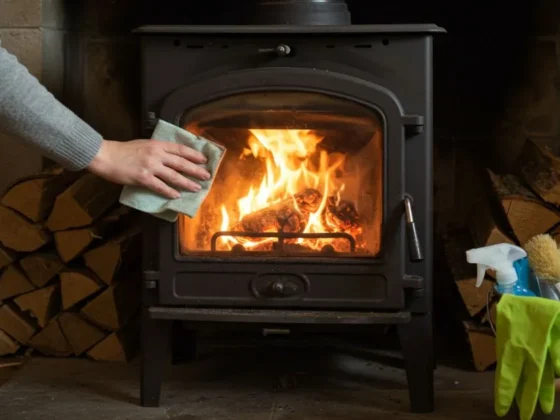Cleaning your patio is key to keeping it safe and looking good. Regular cleaning stops moss and algae from growing. This reduces the chance of accidents. A clean patio also makes your outdoor area more inviting for relaxation and fun.
To get your patio spotless, you need the right cleaning methods. This includes using the best tools and materials. This way, your patio will stay in top condition for a long time.
Keeping your patio clean is important for its longevity. The right cleaning techniques can get rid of dirt, grime, and stains. This leaves your patio looking brand new. No matter the size of your patio, cleaning it regularly is essential. It keeps your space safe and enjoyable for everyone.
By following the best practices for patio maintenance, you can enjoy your outdoor area all year. A clean patio is not just about looks; it’s about safety and comfort too.
Why Regular Patio Cleaning Matters ?
Regular patio cleaning keeps your outdoor space safe and looking good. A clean patio boosts your property’s look and value. It stops dirt, grime, and algae from making your patio slippery and dangerous.
Regular patio cleaning has many benefits:
- It makes your patio safer by reducing slip and fall risks.
- It makes your outdoor area more welcoming and attractive.
- It increases your home’s value, making it more appealing to buyers.
By focusing on patio cleaning, you get a clean patio that’s both safe and lovely. Regular care also saves you money on repairs and makes your patio last longer.
| Benefits of Regular Patio Cleaning | Description |
| Improved Safety | Reduces the risk of slips and falls |
| Enhanced Aesthetic Appeal | Makes your outdoor space more inviting |
| Increased Property Value | Makes your home more attractive to potential buyers |
Regular patio cleaning makes your outdoor space safe, beautiful, and useful. It improves your life quality.
What You Need to Clean Your Patio ?
Cleaning patio slabs needs the right tools and materials. The right tools can greatly improve the cleaning process. For example, a quality brush helps remove dirt, while a suitable cleaner tackles tough stains.
To start, you’ll need a few key items. These include:
- A broom or brush to sweep away leaves and debris
- A patio cleaner or detergent specifically designed for cleaning patio slabs
- A hose or water source to rinse the patio
- A scrub brush or scrubber to tackle tough stains
The type of patio surface you have also matters. For a concrete patio, you might need a stronger cleaner and scrub brush. But for a natural stone patio, a gentler cleaner is better to avoid damage.
With the right tools and materials, you can keep your patio looking great. It will stay a beautiful and useful outdoor space for many years.
| Tool/Material | Description |
| Broom or Brush | For sweeping away leaves and debris |
| Patio Cleaner or Detergent | For cleaning patio slabs and removing stains |
| Hose or Water Source | For rinsing the patio |
| Scrub Brush or Scrubber | For tackling tough stains |
Preparing Your Patio for Deep Cleaning
Before you start cleaning your patio, remove any furniture, plants, or items. This makes the cleaning easier and safer. A clean patio is not only nice to look at but also safer and more fun to use.
To prepare your patio, first clear it of leaves or branches. Then, sweep it to get rid of dirt or dust. This step helps avoid damaging the patio and ensures it’s clean.
Clearing and Sweeping
- Remove any furniture, plants, or other items from the patio
- Clear the patio of any debris, such as leaves or branches
- Sweep the patio to remove any dirt or dust
Protecting Surrounding Plants
It’s also key to protect plants around your patio. You can cover them with a sheet or move them away. This keeps them safe from the cleaning solution and materials.
| Patio Cleaning Preparation Tips | Benefits |
| Clear the patio of debris | Prevents damage to the patio surface |
| Sweep the patio | Removes dirt and dust, ensuring a clean patio |
| Protect surrounding plants | Prevents damage to plants from cleaning solution or materials |
How to Clean Patio Slabs Effectively ?
Keeping your cleaning patio slabs in top shape is key to their look and life span. Patio slabs can get dirty and stained over time, ruining your outdoor area’s vibe. To ensure your patio slabs stay in great condition, regular cleaning is a must.
There are various ways to clean patio slabs, based on how dirty they are. For everyday dirt, soap and water work well. But, for tough stains, you might need a special cleaner. Remember, a pressure washer can be great for a deep clean, but use it carefully to avoid damage.
- Use a broom or brush to sweep away any debris or dirt from the patio slabs
- Mix a solution of soap and water, and apply it to the patio slabs using a mop or soft-bristled brush
- Allow the solution to sit for a few minutes before rinsing with clean water
- For more stubborn stains, consider using a specialized cleaning patio slabs solution or consulting a professional
By sticking to these cleaning tips, you can keep your patio slabs looking great and functional. Regular patio slab cleaning also stops moss and algae from growing. This makes your patio slabs safer and more inviting.
How to Pressure Wash Your Patio the Right Way ?
Pressure washing is a great way to clean your patio. It removes dirt, grime, and stains. To do it right, you need to know the basics. This includes picking the right pressure, technique, and pattern to avoid damage.
Doing it well can make your patio look new again. But, there are mistakes to watch out for. Using too much pressure can harm your patio or plants. Follow some simple tips for a safe and effective clean.
Choosing the Right Pressure Setting
The pressure you use depends on your patio’s material. Concrete can handle more pressure than natural stone. Start with a low setting and increase slowly to avoid damage.
Technique and Pattern
How you wash your patio matters too. Use a wide fan tip and keep the nozzle 12 inches away. Move the nozzle in a steady, back-and-forth motion. Clean in sections for even coverage.
Common Pressure Washing Mistakes
Don’t make common mistakes like using too much pressure or not protecting plants. Also, test a small area first. Knowing these mistakes helps you clean your patio right and enjoy it for years.
| Pressure Setting | Patio Surface |
| Low | Natural Stone |
| Medium | Concrete |
| High | Brick |
By following these tips, you can keep your patio clean and well-kept. Regular cleaning boosts your property’s value, safety, and looks.
Natural and Eco-friendly Patio Cleaning Solutions
Cleaning your patio should consider the environment. Eco-friendly patio cleaning solutions are a good choice. They are better for the planet and safer for your family.
White vinegar, baking soda, and castile soap are popular natural cleaners. You can mix them to make a powerful eco-friendly patio cleaning solution. For example, mix 1 cup of white vinegar with 1 cup of water and add 1 tablespoon of castile soap. This is great for cleaning patio slabs.
Here are some benefits of using natural patio cleaners:
- Reduced environmental impact
- Improved safety for you and your family
- Cost-effective
- Easy to make at home
Choosing eco-friendly patio cleaning solutions helps the environment. It also makes your outdoor space healthier. So, why not try natural patio cleaners? Your patio and the environment will appreciate it.
| Natural Patio Cleaner | Ingredients | Instructions |
| Vinegar Solution | 1 cup white vinegar, 1 cup water, 1 tablespoon castile soap | Mix ingredients together and apply to patio slabs |
| Baking Soda Paste | 1 cup baking soda, 1 cup water | Mix ingredients together to form a paste and apply to tough stains |
Tackling Stubborn Stains and Growth
Keeping your patio clean is tough, especially with stubborn stains and growth. The right cleaning solutions and techniques can help. Removing patio stains needs patience and hard work.
A clean patio looks great and is safe. It’s also important for its durability. Removing stains and growth makes your patio safe for everyone.
Removing Moss and Algae
Moss and algae are common patio problems. Use water and bleach or a cleaning solution to remove them. Always wear gloves and eyewear and rinse well to avoid damage.
Dealing with Rust Marks
Rust marks are hard to remove but can be done. Try baking soda and water or a rust remover. Test any solution on a small area first to avoid damage.
Eliminating Oil Stains
Oil stains are tough but can be removed. Use dish soap and warm water or an oil stain remover. Act fast to increase your chances of removing the stain completely.
Special Considerations for Different Patio Materials
When cleaning your patio, it’s key to know what your material needs. This ensures your patio stays clean and looks great for longer. Each material has its own cleaning method and products to avoid damage.
Concrete patios need gentle cleaning to prevent damage. A mild detergent and warm water work well for regular cleaning. Natural stone patios, however, require a delicate touch to avoid etching or staining. Use a pH-neutral cleaner specifically for natural stone to clean without harm.
Concrete Patios
For concrete patios, a pressure washer can be used but with care. Use a wide fan tip and keep the nozzle far away to avoid damage. For stubborn stains, apply a concrete cleaner and then rinse well with clean water.
Natural Stone
Natural stone, like limestone or sandstone, needs a soft touch. Use a soft-bristled brush and a mild detergent to clean. Regular sealing is also crucial to protect from the elements and prevent stains.
Block Paving
Block paving patios can be cleaned with a pressure washer and a special cleaning solution. Make sure to remove weeds or debris from the gaps first for a thorough clean.
| Patio Material | Cleaning Method | Recommended Products |
| Concrete | Mild detergent and warm water | Concrete cleaner, pressure washer |
| Natural Stone | pH-neutral cleaner, soft-bristled brush | Natural stone cleaner, sealant |
| Block Paving | Pressure washer, cleaning solution | Block paving cleaner, weed killer |
Knowing how to clean your patio material properly ensures it stays in great condition. Regular cleaning and maintenance prevent damage and save on costly repairs.
Professional vs DIY Patio Cleaning
When cleaning your patio, you can choose between professional or DIY cleaning. Professional patio cleaning is convenient and skilled, using the right tools for tough stains. DIY patio cleaning is cheaper and lets you control the cleaning.
Think about how dirty your patio is. For small, lightly soiled areas, DIY patio cleaning might work. But for big patios with hard stains, professional patio cleaning is better. Here are some things to think about:
- Cost: DIY patio cleaning saves money, but you’ll need to buy tools and cleaners.
- Time: Professional patio cleaning saves time, as experts do the work for you.
- Effectiveness: Professional patio cleaning usually gets better results, thanks to their skills and tools.
Choosing between professional patio cleaning and DIY patio cleaning depends on what you need. If you choose DIY patio cleaning, find the best cleaning methods and products for success.
| Option | Advantages | Disadvantages |
| Professional Patio Cleaning | Convenience, expertise, effective results | Cost, limited control |
| DIY Patio Cleaning | Cost-effective, control over the process | Time-consuming, may not be as effective |
Seasonal Patio Maintenance Tips
To keep your patio looking great, regular maintenance is key. This includes patio maintenance like cleaning and protecting it from the weather. A clean patio is not just nice to look at. It’s also safe and healthy for your family.
Seasonal patio maintenance has its own tasks. In spring, clean off dirt and moss that built up over winter. Use a pressure washer or a mix of mild detergent and water. Regular sweeping and cleaning keep your patio looking its best.
Spring Cleaning Checklist
- Sweep the patio to remove any debris or dirt
- Pressure wash the patio to remove any stubborn stains or moss
- Inspect the patio for any damage or wear and tear
- Apply a sealant to protect the patio from the elements
Winter Protection Methods
In winter, protect your patio from frost, snow, and ice. Use a sealant, cover it, or a patio heater to keep it warm and dry. Regular patio maintenance helps your patio last longer.
| Season | Maintenance Tasks |
| Spring | Clean the patio, inspect for damage, apply a sealant |
| Winter | Apply a sealant, cover the patio, use a patio heater |
Follow these seasonal patio maintenance tips to keep your patio in great shape. Always focus on clean patio practices. This way, your patio stays beautiful and durable for years.
Common Patio Cleaning Mistakes to Avoid
Cleaning your patio right is key to avoid damage. Using the wrong cleaning products is a big mistake. It can harm your patio or the environment. Always pick the right products and follow the instructions.
Don’t skip the test on a small area first. It helps spot any problems with the cleaner or method. Not wearing safety gear is another big mistake. It can cause accidents. Always wear gloves and goggles and follow safety tips.
- Using high-pressure washes that can damage the patio surface
- Not removing dirt and debris before cleaning, which can lead to scratches and damage
- Not rinsing the patio surface thoroughly, which can leave soap residue and attract dirt
To clean your patio right, follow the best techniques and guidelines. Preparing your patio, choosing the right products, and wearing safety gear are key. This way, you’ll have a clean and safe outdoor space to enjoy.
| Patio Material | Recommended Cleaning Product | Safety Precautions |
| Concrete | Mild detergent and water | Wear gloves and goggles, avoid using high-pressure washes |
| Natural Stone | Specialized stone cleaner | Wear gloves and goggles, avoid using acidic or alkaline cleaners |
| Block Paving | Mild detergent and water | Wear gloves and goggles, avoid using high-pressure washes |
FAQ
What are the essential tools and materials for patio cleaning ?
You’ll need brushes, cleaning solutions, a pressure washer, a broom, and a bucket. Don’t forget gloves and goggles for protection. Choose the right tools for your patio’s surface and cleaning needs.
How do I prepare my patio for deep cleaning ?
Begin by sweeping away loose debris. Then, protect plants and check the weather. This prep ensures a thorough clean without damage.
What is the best way to clean patio slabs ?
Use a cleaning solution and a stiff-bristle brush first. For tough stains, a pressure washer can be effective. Always follow the recommended time for the solution to work.
How do I use a pressure washer to clean my patio ?
Start with a low pressure and keep the wand steady. Increase pressure as needed. Avoid holding the wand in one spot to prevent damage.
What are some natural and eco-friendly patio cleaning solutions ?
Mix warm water, white vinegar, and castile soap for a natural cleaner. Baking soda and lemon juice can also tackle stubborn stains. These options are gentle on your patio and the environment.
How do I tackle stubborn stains and growth on my patio ?
Use a solution for moss and algae, or water and bleach. For rust, try a rust remover or lemon juice and salt. Use a degreaser or baking soda paste for oil stains. Always follow the right application and scrubbing techniques.
What special considerations are there for cleaning different patio materials ?
Concrete needs a concrete cleaner or diluted bleach. Natural stone requires gentle, pH-balanced cleaners. Block paving needs a specialist solution and a stiff-bristle brush. Always choose the right method for your material.
When should I consider hiring a professional patio cleaning service ?
Hire professionals for large or heavily soiled patios, or if you’re unsure about cleaning methods. They have the right equipment and expertise. DIY cleaning can be cost-effective if you’re willing to do the work.
What are the essential seasonal patio maintenance tasks ?
In spring, clean thoroughly and clear debris. In winter, seal or cover the patio to protect it. Regular maintenance keeps your patio looking great and lasting longer.
What are some common patio cleaning mistakes to avoid ?
Avoid using the wrong products, not testing first, and applying too much pressure. Always protect plants and surfaces. Follow the manufacturer’s instructions for a safe clean.










